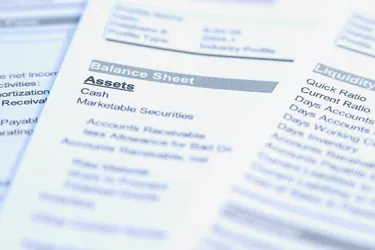
If you're a freelancer, you're a business owner. You're responsible for managing your business's bookkeeping, lining up clients and making sure the work gets done on time. As you tackle your own accounting tasks, though, it can start to feel overwhelming. There are a few accounting essentials that you need to know.
Cash Flow Management
Video of the Day
Freelancers don't have the luxury of a paycheck every couple of weeks. Hopefully, you'll have money coming into your account on a regular basis, but it's important to keep an eye on things. Cash flow refers to the "flow" of money in and out of your business each month.
Video of the Day
Cash flow isn't to be confused with profit. Although your profit is important, you'll need to keep an eye on how much of your profit is going toward paying your business expenses each month. Here's where you distinguish between net vs. gross profit.
- Gross profit: This is the amount you're making each month, not taking expenses into consideration.
- Net profit: This is the amount you have left of the profit you're making after all expenses are paid
Consider also: Using Industry Averages to Manage Your Freelance Business
Freelancer Balance Sheets
Businesses use something called a balance sheet to track their finances. As a freelancer, it's important to be aware of what's on this document to ensure that you're monitoring all the right metrics. You can easily find templates online or in your word processing software that will cover the basics.
There are certain items that are typically included on a business balance sheet.
- Assets: These include the money your business has on hand currently, ideally kept in a separate account dedicated to your business. Also included in your business's assets are the value of any equipment you own and any product inventory you have on hand.
- Liabilities: These include any money you owe to vendors or contractors. These can also include subscriptions and memberships, as well as the cost of your office space and the equipment you use for your business.
Your total net worth is defined as your assets minus your liabilities.
Consider also: 7 Must-Have Freelance Forms
Cash flow isn't to be confused with profit. Although your profit is important, you'll need to keep an eye on how much of your profit is going toward paying your business expenses each month.
Financial Ratios for Freelancers
Once you've noted your business's assets and liabilities, you can use the information to calculate your financial ratios. You can do this in a variety of ways. You should understand the most useful ratios to determine your freelance business's financial health.
- Cash flow to debt: These monthly expenses include any debt your freelance business has accrued. If you leased a laptop, for instance, that's debt specific to your business. To calculate cash flow to debt, use this formula: (Net Income + Depreciation) ÷ Total Debt = Cash Flow to Debt Ratio.
- Net profit margin: To truly get a feel for your freelance business's profitability, you'll need to determine the percentage of revenue that's left after all your expenses are factored in. To get to your net profit margin, use this formula: Net Profit ÷ Total revenue x 100 = Net Profit Margin.
- Acid test: One popular measurement businesses use is the acid test, also known as the quick ratio. This is a great way to determine your freelance business's liquidity, which is the ability you have to pay off all your debts if it becomes necessary. To find the quick ratio use this formula: (Cash + Marketable Securities + Net Accounts Receivable) ÷ Current Liabilities = Quick Ratio.
Income Statements for Freelancers
Periodically, every business owner should check the pulse of the organization. A useful way to do this is through an income statement. This may also be referred to as a profit and loss statement.
Unlike balance sheets, a profit and loss statement only needs to be completed periodically. It's a great way to look at the overall health of your freelance business. There are general categories typically found on a business's profit and loss statement. If your freelance venture is service-oriented, the cost of goods category obviously won't apply to you.
- Revenue/sales
- Cost of goods sold
- General administrative expenses
- Marketing and advertising
- Research and development
- Interest expense
- Taxes
Consider also: 5 Sites for Freelance Success